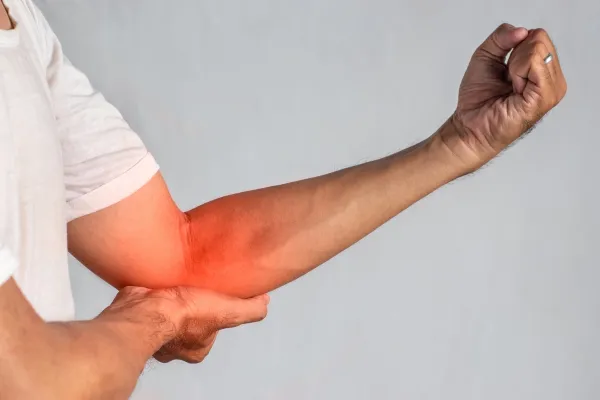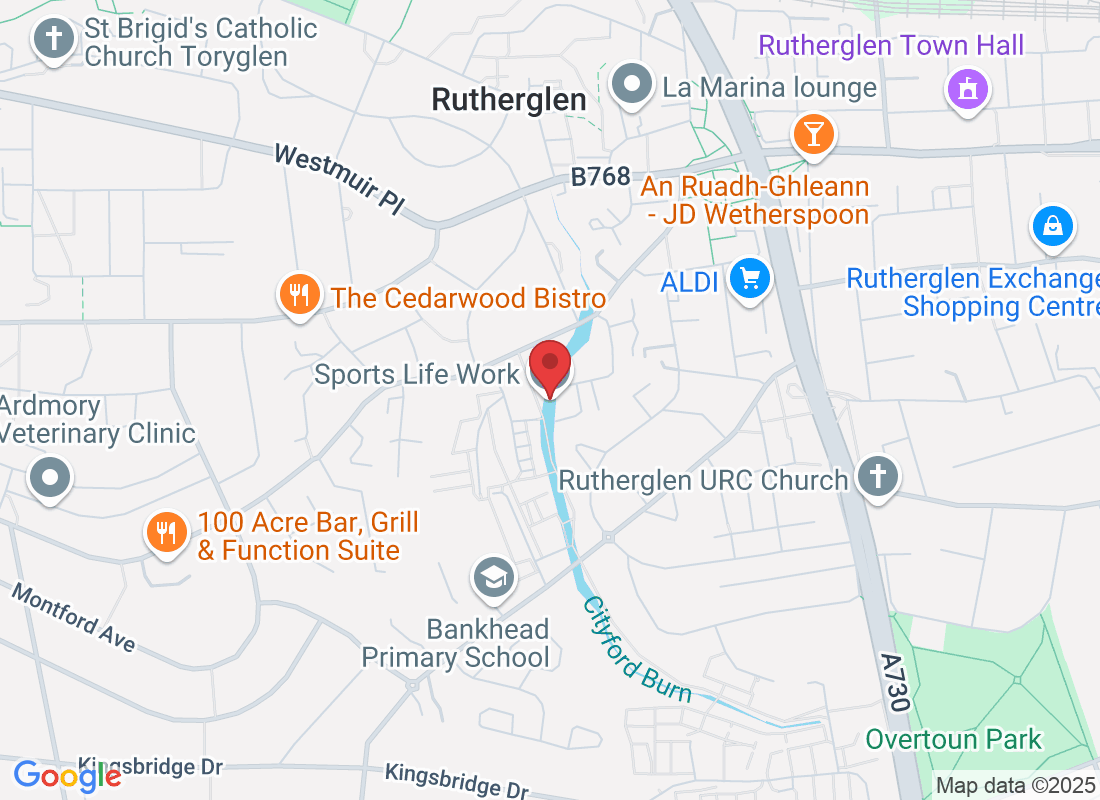Tips & Advice From Sports Life Work

Tennis Elbow (Even if You Don’t Play Tennis): Why It Happens and What Helps
You don’t need to swing a racket to get tennis elbow.
In fact, most people we treat for it at our Sports Injury Clinic in Rutherglen haven’t played tennis in years—if ever.
This common condition affects anyone doing repetitive hand, wrist, or elbow movements. Typing, lifting, DIY jobs, or even holding a heavy saucepan too long can kick it off.
So if you’ve got a nagging pain on the outside of your elbow when you grip, lift, or twist… let’s talk about what’s really going on—and how you can fix it.
What Is Tennis Elbow?
Tennis elbow (officially called lateral epicondylitis) happens when tiny tears form in the tendons on the outside of your elbow. These tears are often caused by overuse—especially movements that involve gripping, lifting, or twisting your forearm.
The result?
Pain that can feel sharp, aching, or tender—especially when you try to pick something up, turn a doorknob, or even shake someone’s hand.
Who Gets Tennis Elbow?
Lots of people assume this is a “sporty” injury, but we see it in people from all walks of life:
Parents lifting young children constantly
Office workers using a mouse all day
Plumbers, joiners and tradespeople using tools repetitively
Cooks and bakers kneading or chopping
New gym-goers starting resistance training without guidance
You don’t have to be an athlete. Just using your hands the same way, over and over, can cause strain that builds up over time.
Why It Doesn’t Just Go Away
Here’s the frustrating part:
You rest it. You ice it. Maybe take some painkillers. It feels okay for a bit… then you go back to doing the thing that caused it, and bam—it’s sore again.
That’s because tennis elbow isn’t just about pain. It’s about tendon health, strength, and how your muscles support the joint.
At Sports Life Work, we help clients from across Glasgow and Rutherglen figure out not only what’s causing the strain—but what’s missing in their recovery.
What Actually Helps Tennis Elbow Heal
If you’ve been dealing with this for a while, here’s what can finally make a difference:
Proper Diagnosis
We start by looking at how your arm moves—your grip, your wrist, shoulder and posture. The elbow might hurt, but it’s often not the only piece of the puzzle.
Hands-On Treatment
Our Glasgow Sports Therapy Specialists use hands-on techniques to release tight muscles, improve joint movement, and reduce pain. You’ll feel the difference after just a few sessions.
Personalised Rehab Plan
This isn’t a one-size-fits-all situation. Your plan might include:
Grip and forearm strength exercises
Stretching tight muscles
Gradual return to gym or work tasks
Postural corrections to avoid re-irritation
As part of our Fitness and Injury Rehab in Rutherglen, we help you rebuild strength safely so your elbow can cope with daily life again.
Education and Support
You’ll learn what movements to avoid (for now), how to modify your routine, and how to tell the difference between “good” discomfort and harmful pain.
When to Get Help
If your elbow pain:
Has been around for more than 2–3 weeks
Feels worse when lifting or gripping
Comes back after you rest it
…it’s time to book in.
Don’t wait for it to get worse. With the right support, you can get back to moving freely and confidently—without wincing every time you open a jar.
Need Help With Elbow Pain?
Come see us at Sports Life Work—your go-to team for Holistic Physiotherapy in Glasgow.
We’ll help you figure out what’s really going on and create a recovery plan that actually works.
📍 Visit our Rehabilitation and Wellness Centre in Rutherglen
📞 Book a session today and take the first step toward pain-free movement.
Ask Sports Life Work And Their Team
Fill in the form to request a call from our team. One of our team members will call you for FREE and answer any questions or concerns you may have about your condition
Where To Find Sports Life Work

If you have any questions before scheduling an appointment or for general inquiries, please use the contact us button below. Our team will promptly reach out to assist you.
Opening Hours
Monday: 9.30am - 4pm
Tuesday: 9.30am - 4pm
Wednesday: 7am-4.30pm & 6pm-9pm
Thursday: 9.30am-4.30pm & 6pm-9pm
Friday: 10am - 4pm
Saturday: 9am - 1pm
Sunday: Closed

